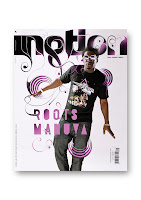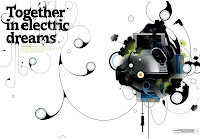 I thought I'd post a sample of the type of typography that I've chosen to focus on for the second project.
I thought I'd post a sample of the type of typography that I've chosen to focus on for the second project. This piece of paper had been lying on my desk for a week, and I found that over a period of time, a very personal sort of documentation evolved with no real design beyond the moods I happened to be in for each element. The elements arose spontaneously and were the results of activities such as testing out paint, noting songs, movies, and quotes, alongside idle drawing while speaking to someone on the phone.
I am particularly draw to this type of typography since, even though everyone has a unique style of handwriting, deviations exist within each individual style, demonstrating mood and personality in an instant, as well as over time when viewed together. As such, the focus of my project is personal typography, and to an extent, the psychology behind hand-writing. I aim to explore the different styles that arise in spontaneous documentation, and the aesthetics of what is produced when there is no conscious consideration of design.
A quick survey of my peers indicated that hand-written notes are on the decline, mainly due to our increasing reliance on technology. There is simply no real need to make hand-written notes these days. Through this project, I therefore intend to reveal the intimacy and spontaneity that has been lost in digital typography.



































